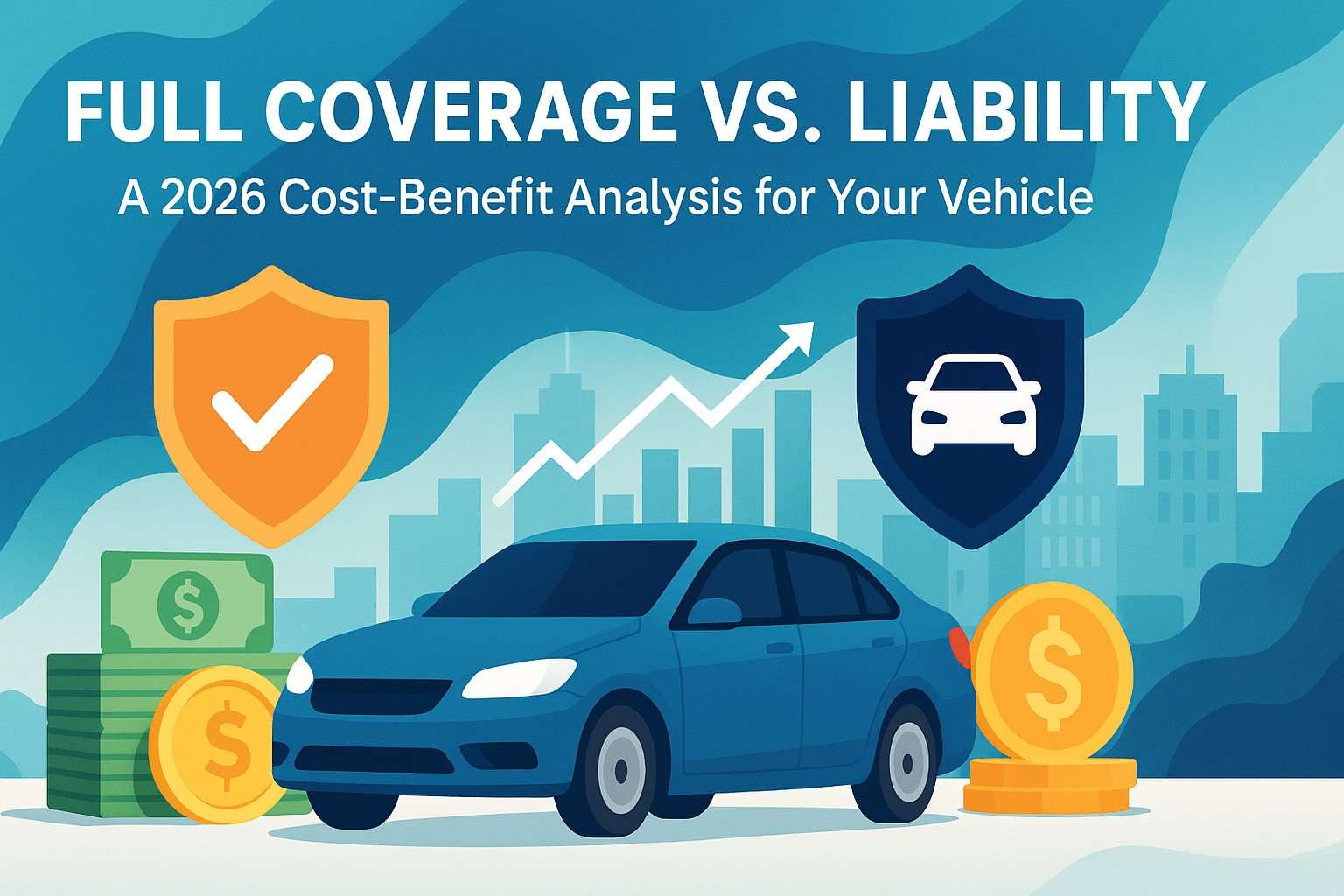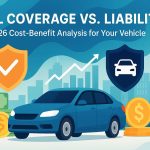You’re staring at the screen. Two numbers. One is comfortably cheap. The other… not so much. This is the moment of truth for every car owner when choosing their insurance. The cheapest option, or the pricey peace of mind?
This is the classic showdown: Liability vs. Full Coverage.
Let’s cut right to the chase. Forget all the confusing insurance jargon. This article will break down the difference directly, helping you calculate the pros and cons for
your car and
your financial situation in 2026.
The Bare Minimum: Liability Insurance
Forget the complicated definitions. Here’s what Liability insurance is in one simple sentence:
It pays for the other person’s damages.
That’s it.
If an accident is your fault, Liability will cover the other driver’s medical bills and their car repair costs. It’s the legal minimum you need to have to be on the road. Your “get out of legal trouble” card, so to speak.
One thing must be crystal clear: Liability does absolutely nothing to fix
your car. Zero. If your car is wrecked, that’s entirely your problem.
The Whole Enchilada: “Full Coverage”
First thing’s first: “Full Coverage” is really just a nickname, not an official insurance product. Think of it as a combo package. This package contains three things:
- Liability: The mandatory part we just discussed.
- Collision: This is what pays to fix your car if you hit something—another car, a pole, a fence. Whatever it is. Your car vs. a pole? Collision pays for it.
- Comprehensive: This is the “when life happens” part. Protection for your car from things like theft, vandalism, hailstorms, hitting a deer, or a tree falling on it while it’s parked.
So, Liability protects other people’s assets. Full Coverage protects other people’s assets AND your own.
The Real Question: How Do You Choose?
Okay, now for the most important part. This decision is 100% about math and your personal risk tolerance. Don’t listen to your friends or family. Ask yourself these four questions.
1. What is my car worth right now?
Stop. Before you read any further, open a new tab and look up your car’s current market value on a site like Kelley Blue Book or Edmunds.
Got the number? Good.
Now, use the “10% test.” Find out the additional annual cost for Full Coverage (the difference between a Full Coverage quote and a Liability quote). If that extra cost is more than 10% of your car’s value, it might be time to consider dropping Full Coverage.
Example: The extra cost for Full Coverage is $700 per year. Your car is only worth $5,000. You’re paying 14% of the car’s value every year just for the extra protection. Financially, that might not make sense anymore.
2. If my car were destroyed tomorrow, could I afford to replace it?
This is the gut-check question.
If your car was totaled or stolen, do you have enough money in savings to buy another decent replacement without having to take on debt or mess up your finances?
If the answer is “no” or “maybe, but it would be really hard,” then the extra cost for Full Coverage isn’t an expense—it’s an investment in your peace of mind. It’s your financial safety net.
3. What is my driving reality?
Do you work from home and only use your car on weekends? Or do you have a 45-minute commute through heavy city traffic every day?
The more you’re on the road, the higher your risk. A higher risk makes a much stronger case for Full Coverage.
4. Where do I live and park?
This is a factor people often forget. Do you live in an area with a high car theft rate? Or in a region known for hailstorms and other extreme weather? If so, Comprehensive protection becomes far more valuable.
Let’s Look at Two People
- Sarah has a 2024 SUV that she’s still making payments on. For Sarah, this isn’t a choice. Her lender requires her to have Full Coverage. Even if they didn’t, it would be incredibly risky for her to only have Liability. She could lose her car in an instant but would still be on the hook for the remaining loan payments.
- David has a 2014 sedan that’s fully paid off. It’s worth about $6,000, and he has a healthy emergency fund. His Full Coverage costs him $800 a year. Using the 10% test, he’s paying over 13% of his car’s value. For him, dropping Full Coverage and “self-insuring” (being ready to pay for things himself) is a logical financial decision.
The Final Verdict for 2026
At the end of the day, this choice is about risk management.
Choose
Liability if your car’s value is relatively low and you are financially prepared to repair or replace it at a moment’s notice.
Choose
Full Coverage if your car is an essential asset that you rely on and you could not easily afford to replace if something bad happened.
Don’t just buy the cheapest policy. Buy the
smartest policy for your situation. That’s how you win the insurance game.











